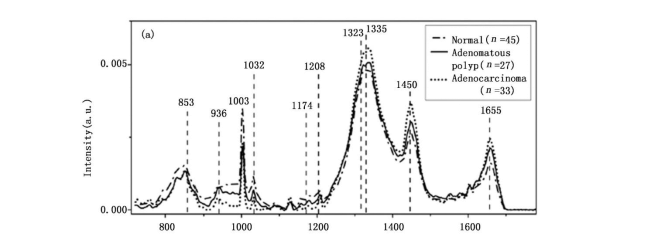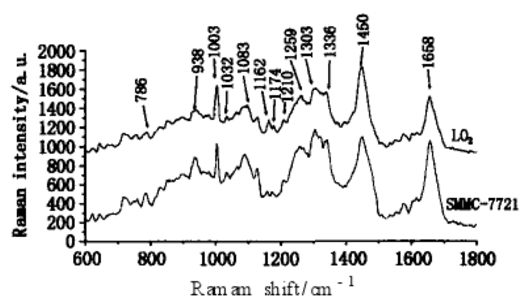|
簡(jiǎn)體中文|
English| Launch:2019-07-26 |
* Introduction
Cancer is one of the most important diseases that threaten human health and life. Cancer may occur in all human organs. Every year around 6 million people around the world are killed by cancer. In China, about 1.5 million people die of cancer. Clinical studies show that the prognosis of cancer is closely related to early detection, early diagnosis and early treatment. Therefore, early detection of cancer is of great importance in clinical medicine. At present, the conventional diagnostic methods of cancer include medical imaging, tumor markers detection and minimally invasive interventional examination, but these methods are difficult to detect the biochemical and molecular structural abnormalities of cancerous tissues and cells in the early stage, and have the shortcomings of low positive rate, time-consuming and transitional diagnosis, so it is urgent to study them in clinic. It is a convenient, non-invasive, sensitive and specific diagnostic method for screening high-risk population, controlling the development of tumor to a certain extent and improving the survival rate of patients. In recent years, Raman spectroscopy has reached the level of single molecule detection, and can be used as a powerful tool for analyzing molecular structure to study various life science problems.
Raman spectroscopy can reflect the Micro-changes of tissue biochemistry at the molecular level. It has the ability of non-invasive, rapid and fine resolution such as "fingerprint". Raman spectroscopy has been paid more and more attention. It has made great progress in biomedical research and clinical diagnosis, especially in the diagnosis of early cancer. At present, Raman spectroscopy has been applied to the diagnosis of various cancers.
* Application
Application of Raman spectroscopy in early diagnosis of gastric cancer
Gastric cancer is the fourth most common malignancy and the second leading cause of cancer death worldwide. The main cause of high mortality of gastric cancer is the lack of early detection and timely treatment. Adenomatous polyps have a significant potential for malignant transformation into adenocarcinoma, which is a lesion in the tissue, if it can be early detected and resected can lower the incidence of gastric cancer. However, it is still difficult to observe with the naked eye under gastroscope. Raman spectroscopy has the advantages of non-invasive, rapid and sensitive. Especially, it can be used to detect deeper penetrating tissue under near infrared excitation light.
The average Raman spectra of several normal gastric cell tissues, adenomatous polyps and gastric adenocarcinoma tissues were obtained as shown in Fig.1.

Fig.1 normal gastric tissue, adenomatous polyp and gastric adenocarcinoma
Although the Raman spectra are similar, it can be seen that with the pathological changes of normal gastric tissues, some characteristic peaks change in Raman frequency shift and intensity, which also reflects the changes of internal substances.
Raman spectroscopy analysis of single hepatoma cells
Hepatocellular carcinoma (HCC) is also a kind of cancer with high mortality. Early canceration has no clinical symptoms and is difficult to detect by conventional detection methods. Raman spectroscopy reflects the structure and changes at the molecular level. Raman spectroscopy of multiple groups of normal hepatocytes (LO2) and hepatocellular carcinoma cells (SMMC-7721) showed the average spectrum as shown in Fig.2

Fig.2 average Raman spectra of normal hepatocytes (LO2) and hepatoma cells (SMMC-7721).
It can be seen that there is a significant difference between normal hepatocytes and hepatocellular carcinoma cells, the overall spectral line intensity is weakened, and there are also significant changes in some characteristic peaks. The liver cancer cells can be determined.
Raman spectroscopy is a non-destructive, non-invasive and high-resolution detection method, which has shown its advantages in cancer detection. It has been widely used in gastric cancer, breast cancer, nasopharyngeal carcinoma and skin cancer. With the development of laser tweezers and confocal microscopy, the diagnosis of cancer cells at the single cell level will be realized. It is hopeful to reveal the mechanism of canceration, so as to establish a more powerful experimental basis for the diagnosis of cancer.
Reference:
Raman spectroscopy is used for the study of the early diagnosis of gastric cancer, Shuwen Luo et al.
Raman spectroscopy of single liver cancer cells, Wenpei Yang et al.

